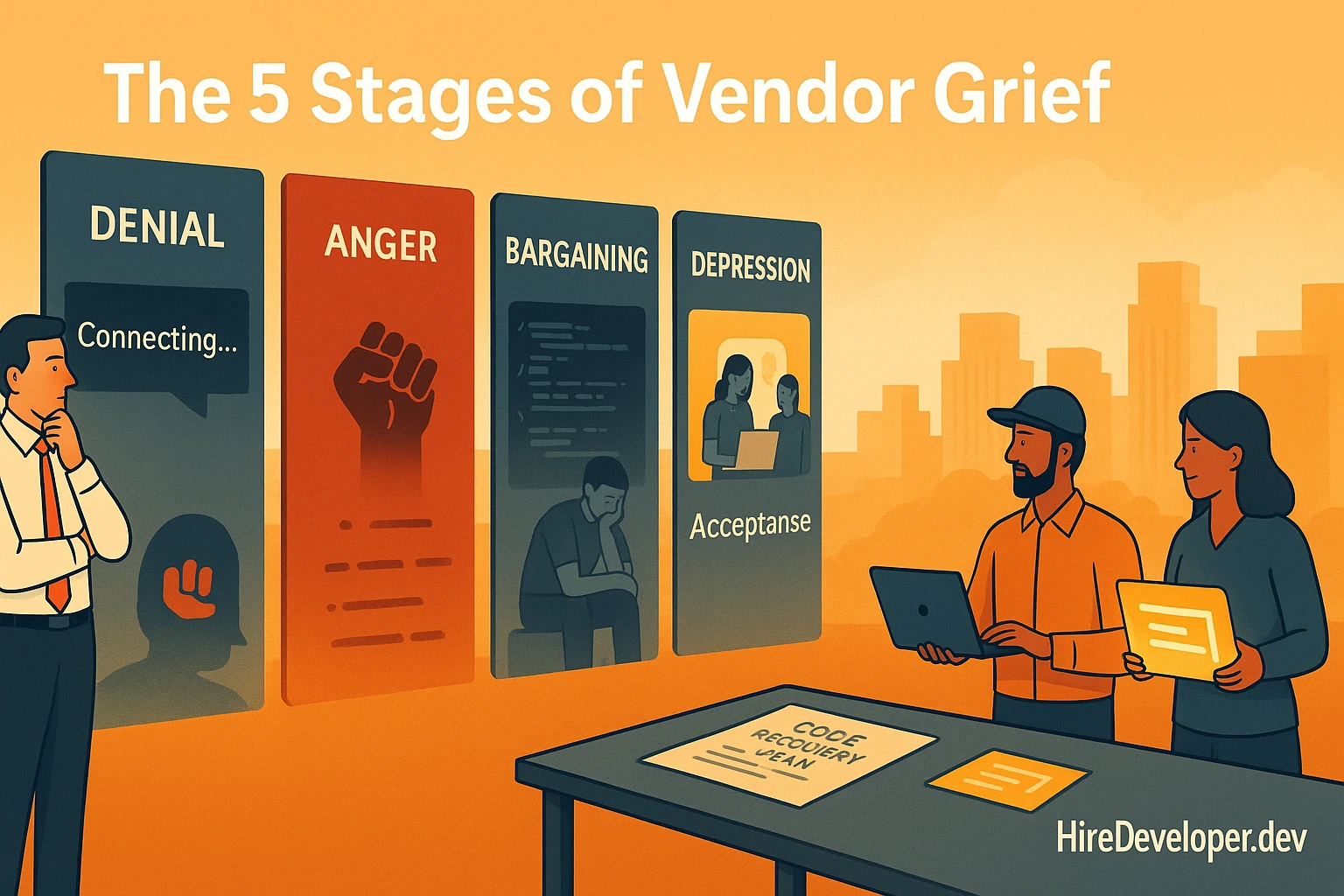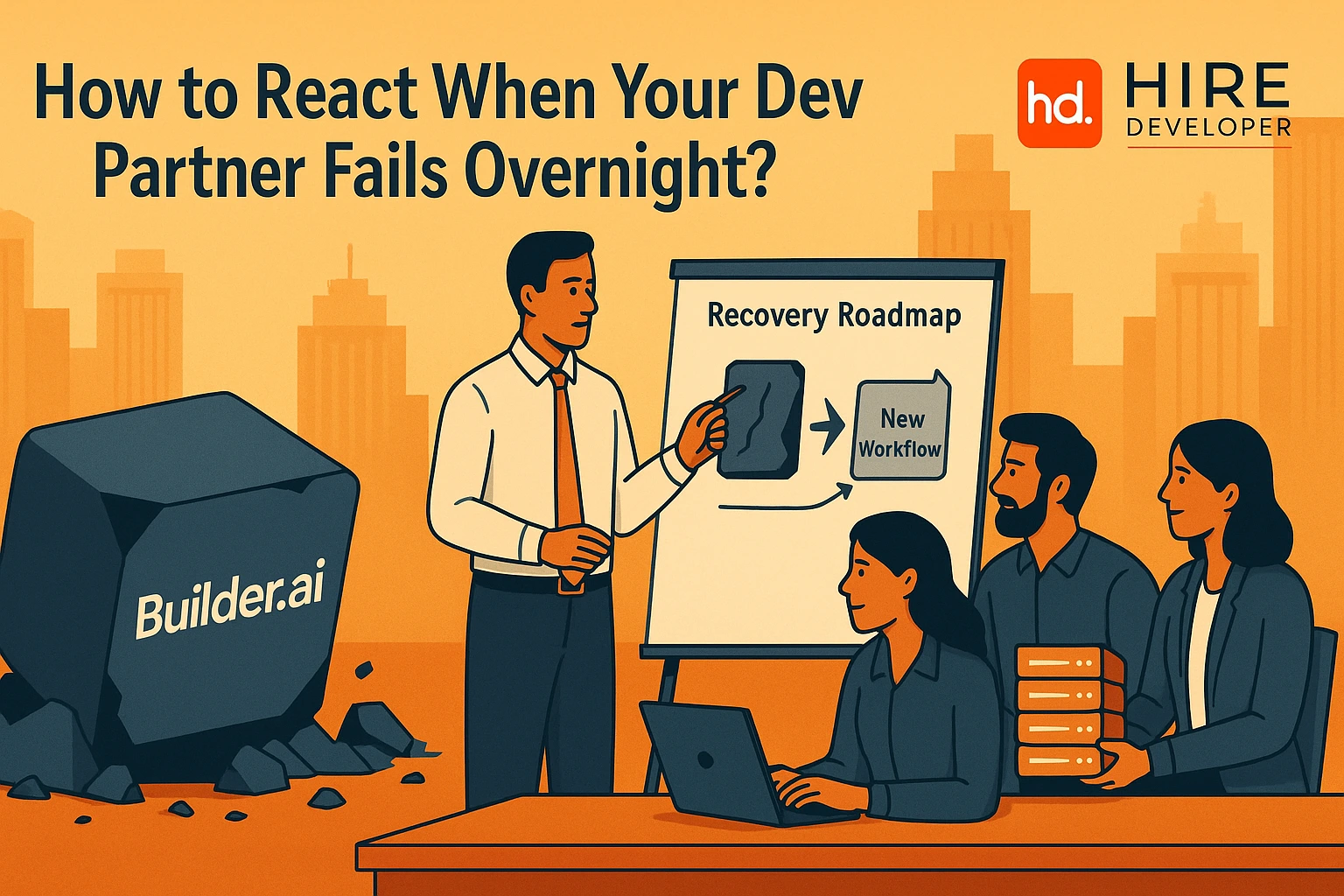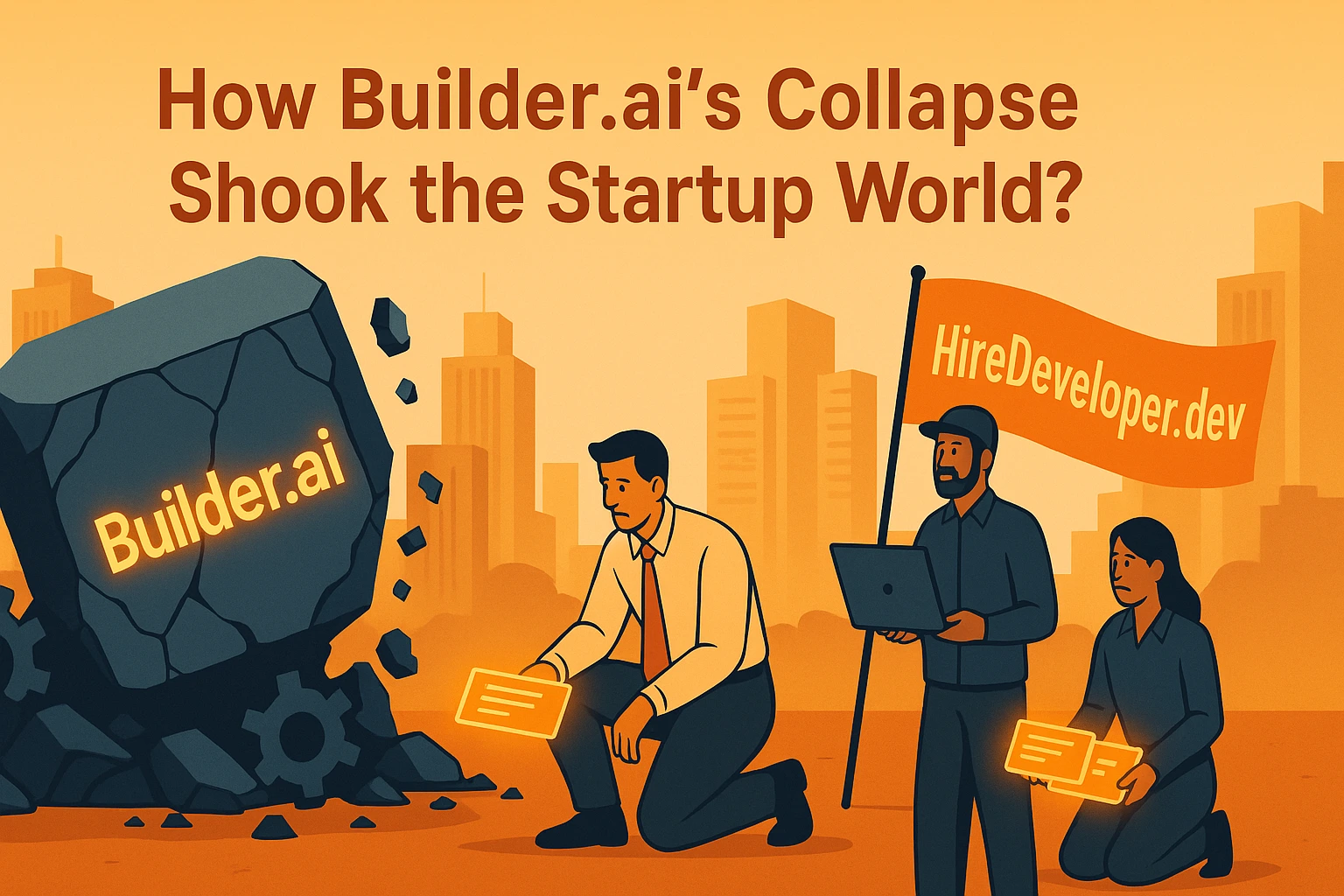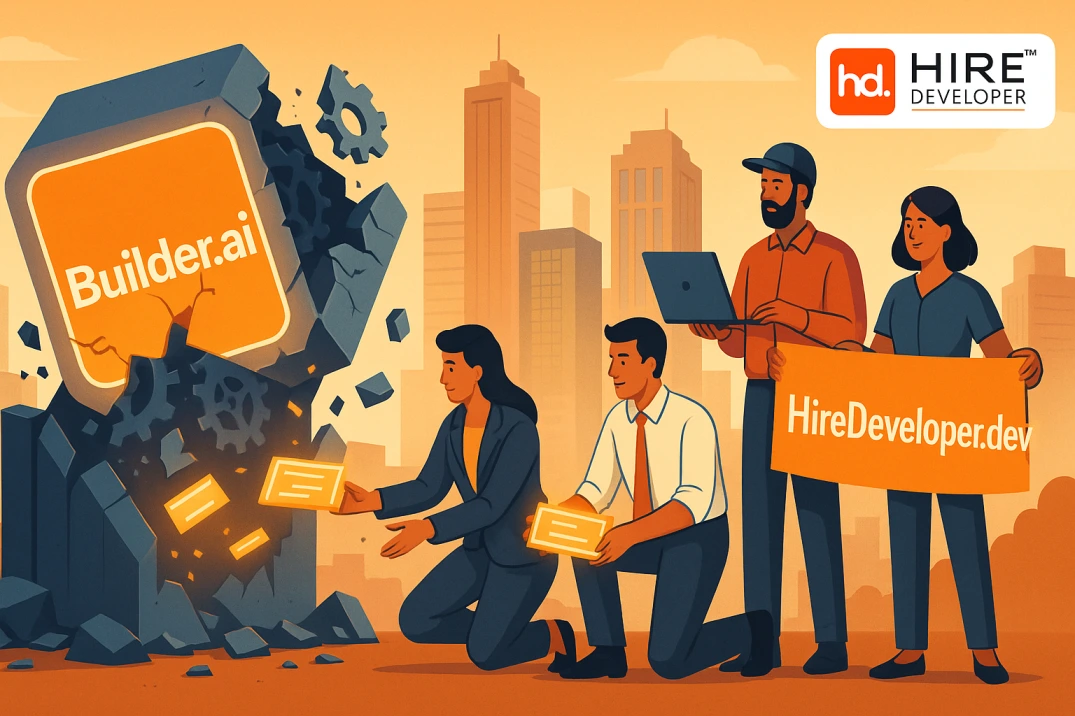“We just signed the next phase. A week later, they were gone.”
You trusted your product to a team. A platform. A partner. Now, they’re silent. Shut down. Gone.
Whether it was Builder.ai or another vendor collapse, the feeling is the same: rage, panic, disbelief, exhaustion.
But what if this emotional chaos follows a pattern? What if naming that pattern is how you break free of it?
The 5 Stages of Vendor Grief
1. Denial: “It’ll come back online soon.”
- Maybe it’s a system update.
- Maybe their email’s down.
- Maybe you missed a memo.
The first instinct is to rationalise because if it’s temporary, you won’t need to deal with the fallout. But when systems stay silent and your team can’t deploy, it’s time to face it: they’re not coming back.
2. Anger: “How could they do this to us?”
Anger is righteous. You were misled. Your product is now exposed. Worse, your investors or users may see the outage as your failure.
But anger, while natural, doesn’t build roadmaps. It blocks them. Use it. Channel it. But don’t sit in it.
3. Bargaining: “Maybe we can salvage something…”
Here’s where founders start digging:
- Old backups.
- Forgotten staging URLs.
- Developer LinkedIn DMs.
This is a valuable stage. It’s where recovery starts, but only if you bring in outside eyes. You need real engineers who can audit, not just sympathise.
4. Depression: “Maybe we should just start over…”
This is the danger zone. You start doubting everything:
- Should we have hired in-house?
- Is the product even viable?
- Are we just too late now?
Here’s the truth: You’re not too late. You’re just disoriented. You had a plan. Now you need a partner who won’t disappear.
5. Acceptance (and Rebuilding): “Let’s move forward, smarter.”
You’ve seen the risks. Now you’re ready to lead again with control, transparency, and alignment.
This is where a dedicated team model like staff augmentation shines:
- You own the code.
- You’re onboard the team.
- You call the shots.
That’s how recovery happens with clarity and command, not another platform dependency.
Why the Emotional Map Matters
If you don’t name these stages, you repeat them.
Too many founders leave one unstable vendor for another, only to relive the same cycle: overpromise → underdeliver → disappear.
The fix isn’t just technical. It’s structural. It’s cultural.
From Grief to Growth With HireDeveloper.Dev
At HireDeveloper.Dev, we’ve helped multiple clients move from chaos to clarity. Not with dashboards. Not with marketing lingo. With:
- Real developers.
- Transparent onboarding.
- Flexible scale.
- Zero platform lock-in.
You’ve felt grief. Let’s rebuild with people you can call, code you can own, and a process that respects your vision.
Still Stuck in the Fallout?
Our clients went from platform loss to product growth in just a week while maintaining full control. Book a free consultation now and hire an experienced, vetted developer at no extra cost with HireDeveloper.Dev.
Related Resources:
- What Happened to Builder.ai? A Breakdown for Startup Founders
- How Builder.AI’s Collapse Shook the Startup World?
- How to React When Your Development Partner Fails Overnight?
- Builder.ai’s Fall: Lessons for Product Owners and CTOs
- Builder.ai Migration Checklist: Save Your Code, Your Time, Your Product
- You Don’t Need to Start Over How to Transfer Your Project Safely
- From Panic to Progress, Real Strategies to Move on from Builder.ai
- Why Moving Fast Now After Builder.ai’s Collapse Will Save You Months Later
- How HireDeveloper.Dev Helps Builder.ai Clients Rebuild with Confidence
- Builder.ai vs. Human-Led Dev Teams: What We’ve Learned
- No More Black Boxes: The Power of Developer Transparency
- AI Was the Hype: Human Execution Is the Reality
- In Crisis, Founders Need More Than Just Tech: They Need Trust
- Why Owning Your Codebase Is Non-Negotiable in 2025
- Avoiding the Next Builder.ai: Red Flags Every Buyer Should Watch For
- From Locked to Liberated: How We Helped Former Builder.ai Clients Reclaim Control
- The Myth of One-Click Apps: Why Custom Always Wins in the Long Run
- What Every Investor Wants to Know: Technical Due Diligence After Builder.ai
- From Recovery to Resilience: A Blueprint for Building Post-Builder.ai



